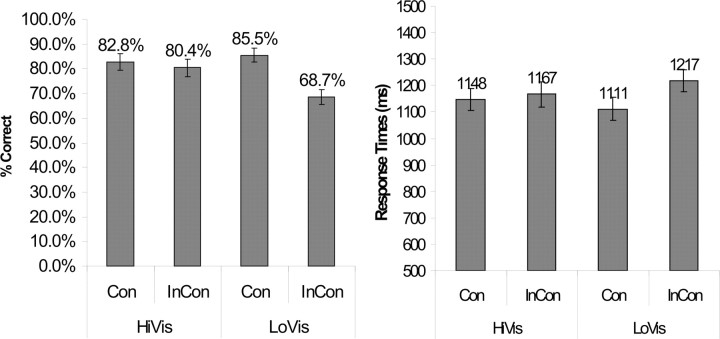Figure 2.
Behavioral demonstration of the priming effect. HiVis and LoVis, respectively, refer to the high and low visibility of the primes. Con and InCon refer to the congruency and incongruency between the primes and the instructions. When the primes were incongruent with the instructions, volunteers were primed to perform the alternative (i.e., wrong) task, and their accuracies were lower (left) and response times bigger (right). Interestingly, this was particularly true when the visibility of the primes was low, as reflected by interactions between the factors of Congruency and Visibility in both the accuracies (p = 0.001) and the response times (p < 0.0005). This justifies the claim that the priming effect operates fundamentally at an unconscious level.

